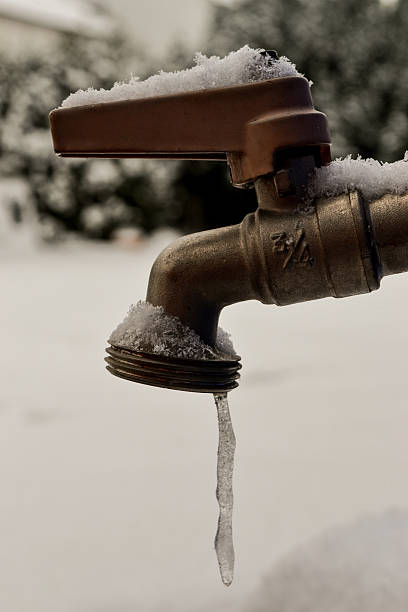What're your thoughts concerning How to prepare your home plumbing for winter weather?

Winter can ruin your plumbing, especially by freezing pipelines. Below's just how to stop it from taking place and what to do if it does.
Introduction
As temperatures decline, the threat of frozen pipelines boosts, possibly causing expensive repairs and water damages. Comprehending exactly how to stop icy pipes is important for home owners in chilly environments.
Avoidance Tips
Protecting susceptible pipes
Cover pipes in insulation sleeves or utilize warm tape to protect them from freezing temperature levels. Focus on pipelines in unheated or exterior areas of the home.
Home heating techniques
Keep interior spaces sufficiently heated, especially areas with plumbing. Open cupboard doors to enable warm air to distribute around pipes under sinks.
Exactly how to determine frozen pipes
Search for decreased water circulation from taps, unusual smells or sounds from pipes, and noticeable frost on revealed pipelines.
Long-Term Solutions
Structural adjustments
Think about rerouting pipelines far from exterior walls or unheated locations. Include extra insulation to attics, cellars, and crawl spaces.
Upgrading insulation
Invest in high-quality insulation for pipelines, attics, and wall surfaces. Proper insulation helps preserve consistent temperature levels and lowers the threat of frozen pipelines.
Safeguarding Outdoor Pipes
Yard hoses and outside taps
Detach and drain pipes yard hoses before winter season. Mount frost-proof spigots or cover outdoor taps with shielded caps.
Comprehending Icy Pipes
What creates pipes to freeze?
Pipes freeze when exposed to temperatures below 32 ° F (0 ° C) for prolonged periods. As water inside the pipes freezes, it broadens, taxing the pipeline walls and potentially causing them to break.
Threats and problems
Frozen pipes can cause supply of water interruptions, residential or commercial property damages, and expensive repairs. Burst pipelines can flooding homes and cause considerable structural damage.
Indications of Frozen Piping
Recognizing frozen pipes early can stop them from breaking.
What to Do If Your Pipelines Freeze
Immediate actions to take
If you think icy pipes, maintain taps open up to alleviate stress as the ice melts. Use a hairdryer or towels taken in hot water to thaw pipes gradually.
Conclusion
Preventing icy pipes requires positive actions and fast feedbacks. By recognizing the causes, indications, and preventive measures, homeowners can safeguard their pipes during winter.
5 Ways to Prevent Frozen Pipes
Drain Outdoor Faucets and Disconnect Hoses
First, close the shut-off valve that controls the flow of water in the pipe to your outdoor faucet. Then, head outside to disconnect and drain your hose and open the outdoor faucet to allow the water to completely drain out of the line. Turn off the faucet when done. Finally, head back to the shut-off valve and drain the remaining water inside the pipe into a bucket or container. Additionally, if you have a home irrigation system, you should consider hiring an expert to clear the system of water each year.
Insulate Pipes
One of the best and most cost-effective methods for preventing frozen water pipes is to wrap your pipes with insulation. This is especially important for areas in your home that aren’t exposed to heat, such as an attic. We suggest using foam sleeves, which can typically be found at your local hardware store.
Keep Heat Running at 65
Your pipes are located inside your walls, and the temperature there is much colder than the rest of the house. To prevent your pipes from freezing, The Insurance Information Institute suggests that you keep your home heated to at least 65 degrees, even when traveling. You may want to invest in smart devices that can keep an eye on the temperature in your home while you’re away.
Leave Water Dripping
Moving water — even a small trickle — can prevent ice from forming inside your pipes. When freezing temps are imminent, start a drip of water from all faucets that serve exposed pipes. Leaving a few faucets running will also help relieve pressure inside the pipes and help prevent a rupture if the water inside freezes.
Open Cupboard Doors
Warm your kitchen and bathroom pipes by opening cupboards and vanities. You should also leave your interior doors ajar to help warm air circulate evenly throughout your home.

I am just very curious about How to Prevent Your Pipes From Freezing and I'm hoping you appreciated the post. Are you aware of somebody else who is truly interested in the topic? Be sure share it. Many thanks for your time invested reading it.
Try Here